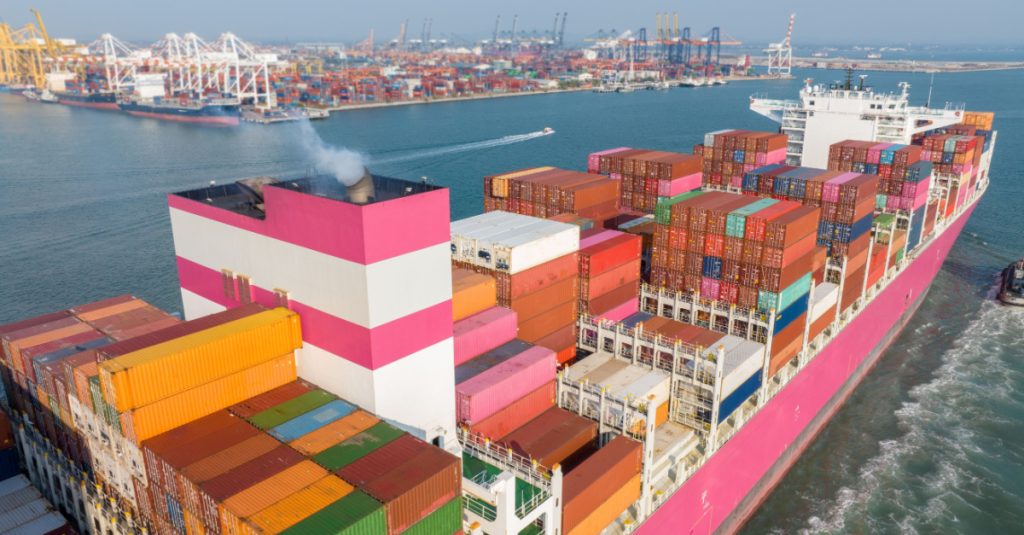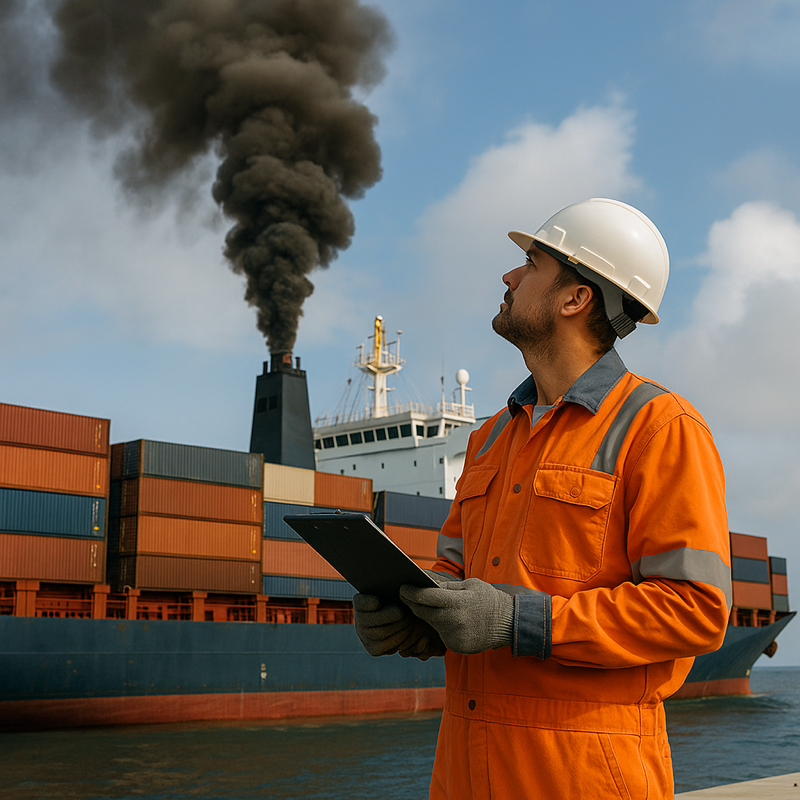In 2021, Yara Birkeland, the first fully electric autonomous cargo ship, measuring 80 meters long and weighing 3200 tonnes, made its maiden voyage from Porsgrunn, Norway. It relied on an impressive array of eight batteries, boasting a substantial capacity of 6.8 MWh, a figure akin to the power of a hundred Tesla cars. Significantly, this formidable electric energy was predominantly harnessed from sustainable hydropower sources.
This is just one of the many examples of how the industry is trying to reduce its carbon footprint. Clearly, sustainability in shipping is no longer a choice; it’s an imperative. However as the maritime industry begins to embrace greener practices, various concerns and questions arise. Concerns like how shippers can know the impact of their green initiatives, what creative systems can be leveraged to achieve low carbon emissions, and more abound. In this article, we look at some strategies importers, exporters and carriers can harness to go green.
Vessel Sustainability: A Non-Negotiable for Sustainable Logistics
As our planet faces mounting challenges from climate change, the global logistics industry is confronting an urgent dilemma. The prospect of ocean vessels contributing to a staggering 17% of worldwide emissions by 2050, as reported by the International Council on Clean Transportation, is a sobering reality that cannot be ignored. Recognizing the pivotal role they play in reducing Scope 3 emissions, shippers and carriers alike are turning to innovative strategies for vessel sustainability to mitigate the environmental impact of their operations.
In this article, we delve deep into the three pivotal strategies carriers are wholeheartedly embracing to curtail emissions and usher in a new era of sustainable logistics.
- Low Carbon Fuels Paving the Way for Cleaner Journeys: By transitioning from traditional fossil fuels to these more eco-friendly alternatives, carriers are not only curbing their emissions but also signaling their commitment to a sustainable future.
- Harnessing the Power of Electricity With Electric Vessels: By replacing traditional internal combustion engines with electric alternatives, carriers can significantly decrease their emissions and dependence on fossil fuels. Electric vessels are not only environmentally friendly but also more energy-efficient, making them a win-win solution for the industry.
- Innovative Solutions: Sailing into Uncharted Waters: Wind-assist technologies, such as sails and kite systems, can complement traditional propulsion systems, providing an eco-friendly boost to vessel efficiency.
As vessels transition towards sustainability, the shipping industry finds itself at a transformative juncture. Sustainability in logistics has evolved from being an option to becoming a necessity, with the health of our planet hanging in the balance.
The Technology Leading the Way Toward Sustainable Shipping
As the global logistics industry sails towards a more sustainable future, technology plays a pivotal role in shaping the vessel sustainability landscape. In this section, we’ll explore how innovative technologies are driving the transition to greener shipping methods. From low-carbon fuels to electric vessels and creative solutions, these advancements are helping the industry chart a course toward a more sustainable and environmentally responsible future.
Low Carbon Fuels: Powering Sustainable Vessels
Low-carbon fuels represent a significant leap forward in the maritime industry’s efforts to reduce emissions and combat climate change. As a viable alternative to traditional fossil fuels, these fuels are derived from renewable sources or produced using innovative, sustainable processes.
- Green Methanol and More: One notable example is the unveiling of the world’s first vessel using green methanol by shipping giant Maersk. Green methanol is produced from sustainable feedstocks and plays a crucial role in reducing carbon emissions from vessel operations. This development is a testament to the industry’s commitment to low-carbon fuels, marking a substantial step toward sustainability.
- Europe’s Cargo-Carrying Ships: Europe is also leading the way in the adoption of low-carbon fuels for bulk cargo-carrying ships. The use of sustainable marine fuels like biodiesel, hydrogen, and ammonia is gaining momentum, offering a promising avenue for reducing the carbon footprint of maritime transport.
Incorporating these fuels into vessel operations not only helps carriers meet their sustainability goals but also aligns with global efforts to curb emissions and address the challenges posed by climate change. The transition to low-carbon fuels represents a substantial stride toward a more environmentally responsible and sustainable shipping industry.
Electric Vessels: Sailing Ahead with Clean Energy
Electric vessels, often referred to as e-ships, are revolutionizing the maritime sector by harnessing the power of electricity for propulsion. These vessels employ electric propulsion systems, powered by batteries, fuel cells, or overhead power lines, offering a cleaner and more sustainable way to navigate the world’s oceans.
- Pioneering Beyond Propulsion: Electric vessels represent a multifaceted solution to sustainability. Beyond their propulsion systems, these ships are redefining the maritime industry’s approach to energy efficiency. They utilize battery electric technologies to power not only their engines but also various onboard functions. Concepts like hybrid power, which combines traditional engines with electric systems, are helping to reduce emissions significantly.
- Tapping into Renewables: Another notable innovation is the integration of renewable energy sources to power auxiliary components on the ship, such as lighting and climate control. Just as hybrid cars utilize electric power for secondary functions, these vessels are incorporating renewable energy to decrease their reliance on traditional fuel-burning engines. Each efficiency gain brings us closer to achieving net-zero emissions, a vital milestone in the pursuit of sustainability within the maritime industry.
As technology advances and sustainability becomes a core objective, electric vessels are poised to be game-changers in the shipping industry. They not only propel ships forward but also drive the industry toward a greener, more responsible future, where every innovation counts in the journey towards sustainability.
Creative Solutions: Riding the Wind and Beyond
Beyond low-carbon fuels and electric vessels, the shipping industry is embracing creative and innovative solutions to reduce emissions and increase sustainability. These solutions leverage alternative power sources and unconventional technologies to decarbonize vessel operations.
- Harnessing Wind Power: Wind-assist technologies, such as sails and kite systems, are gaining popularity as a way to complement traditional propulsion systems. These systems harness the power of the wind to provide an eco-friendly boost to vessel efficiency, reducing fuel consumption and emissions. Cargill, for instance, chartered a ship to test wind power at sea, highlighting the potential for wind-assist solutions to gain traction within the industry.
Technology is at the forefront of the maritime industry’s transition to sustainability. Low-carbon fuels, electric vessels, and creative solutions are leading the way, offering hope for a more eco-friendly and responsible future. Greenabl Shippers Association, with its comprehensive resources and commitment to global supply chain decarbonization, stands as a beacon in this journey towards a greener future for logistics.
As Sustainability Moves from Option to Necessity, Shippers Seek Solutions
While vessel sustainability is a critical piece of the puzzle, it is just one facet of the larger quest for truly sustainable supply chains. Shippers understand that achieving holistic sustainability requires a comprehensive approach, addressing all aspects of their operations. It’s not enough to simply green the vessels; the entire supply chain needs to be aligned with sustainable practices.
A Holistic Approach to Sustainability: Shippers are turning to innovative resources and solutions to measure, mitigate, and offset carbon emissions throughout their supply chains. Greenabl Shippers Association offers a comprehensive platform for measurement and mitigation. By leveraging Greenabl’s expertise and tools, shippers can build sustainable supply chains from the ground up. As the shipping industry continues to shift from sustainability being an option to a necessity, these holistic approaches provide a roadmap for a greener, more sustainable future.
Charting a Sustainable Course for the Shipping Industry
In a world where the impact of climate change is undeniable, the shipping industry is at a crossroads, compelled to take immediate action. The imperative for sustainability is no longer optional; it’s an absolute necessity. As this article has explored, innovative strategies, including low-carbon fuels, electric vessels, and creative solutions, are propelling the industry toward a greener horizon. Importers, exporters, and carriers are increasingly realizing the role they must play in this journey toward a more sustainable future.
In this transformation, the Greenabl Shippers Association stands as an invaluable partner, offering a 360-degree technology platform for measurement, mitigation, and offsetting of carbon emissions. Greenabl’s cooperative procurement approach, demand aggregation platform, and procurement exchange services are reshaping the way the industry approaches sustainability.As we conclude, it’s time to take action. Get in touch with Greenabl today to learn how they can assist you in navigating the evolving landscape of sustainable supply chains. The path to sustainability may be challenging, but with the right resources, innovative solutions, and a collective commitment, we can pave the way for a greener, more responsible future in the world of logistics. Together, we can ensure that as vessels go green, shippers continue asking the big questions and finding the answers to build a truly sustainable supply chain.


